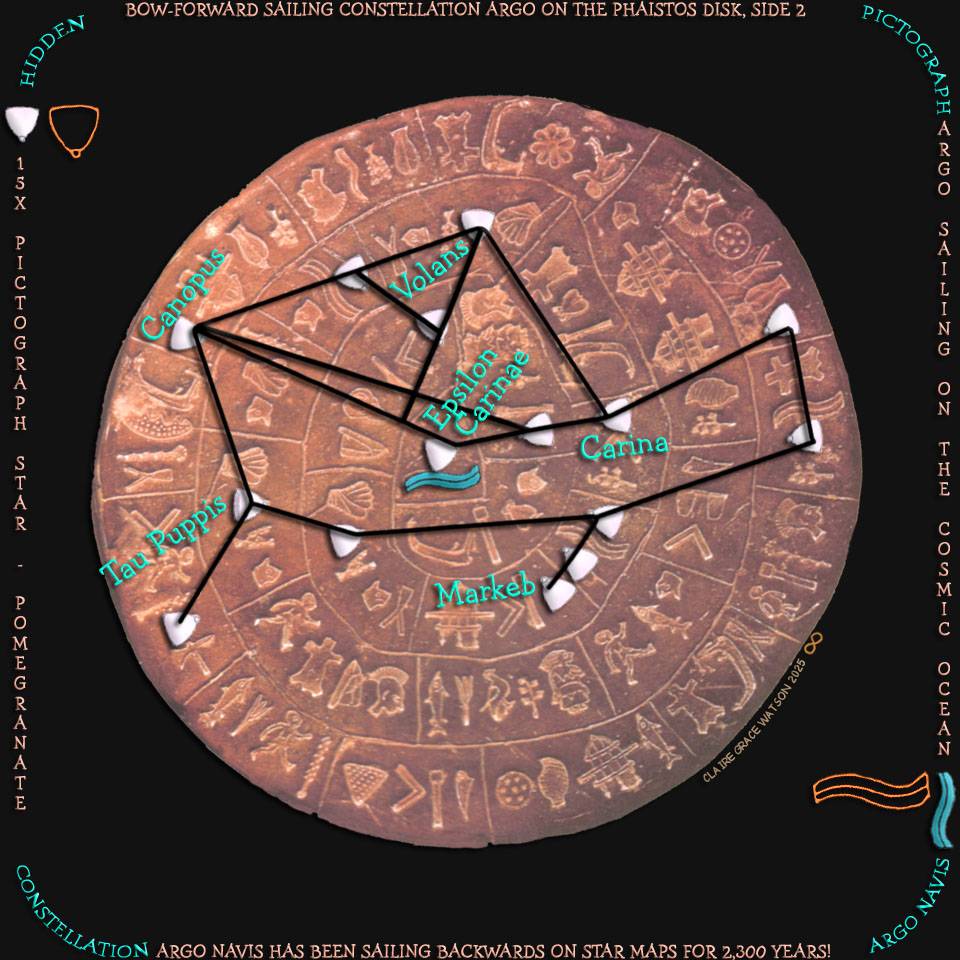
This is a Bronze Age puzzle and the most famous "undeciphered" artifact in archaeology. Treat it like Egyptian hieroglyphs and try to "decipher" it - and get nowhere. Treat it like a puzzle - and solve it. The Phaistos Disk is probably the oldest known "connect-the-dots" type of puzzle. Connect the matching pictographs like dots to reveal 8 individual solutions and hidden, significant pictographs. This first puzzle solution shows a bow-forward sailing Constellation Argo, which means IT HAS BEEN SAILING BACKWARDS ON CONSTELLATION MAPS FOR THE LAST 2,300 YEARS! Seen at the prow of the Argo pictograph is the pilot, the star "'Kanobus' (Canopus), or 'Pilot'-- from whom, they say, the star got its name...Osiris is the General and Kanobus is the Pilot. " (Plutarch in Thrice-Greatest Hermes, G.R.S. Mead)

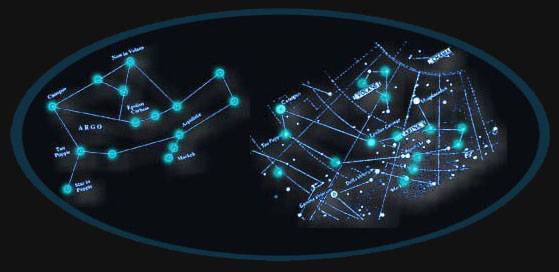
Jason and the Argonauts sailed the Argo about 600 years after the wave-tossed Argo on the Phaistos Disk that is not drawn backwards because it is the original version, logically sailing bow-forward. It has been sailing illogically stern-forward on constellation maps for the last 2,300 years, thanks perhaps to Johannes Hevelius' constellation map of 1642 CE, influenced by Aratos (310-245 BCE), who famously wrote:
"Sternforward Argo by the Great Dog's tail
Is drawn; for hers is not a usual course,
But backward turned she comes, as vessels do
When sailors have transposed the crooked stern
On entering harbour; all the ship reverse,
And gliding backward on the beach it grounds.
Sternforward thus is Jason's Argo drawn."
Minoan astronomers would have a laugh!



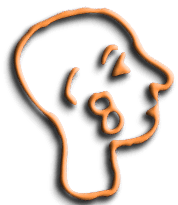 The rope truss was a unique nautical technology advancement of the Bronze Age, used to stiffen the beam of the ship (above at the base of the beam in the shape of a figure 8). No other such use of the truss is known until the days of modern engineering. Does this pictograph (below, left, 1) show a sailor with a rope truss tattoo on his cheek or is that a clue to the solution of the puzzle of the disk? Perhaps it is both. Beside him are pictographs that could be his oar (2) and his glove (3) for rowing.
The rope truss was a unique nautical technology advancement of the Bronze Age, used to stiffen the beam of the ship (above at the base of the beam in the shape of a figure 8). No other such use of the truss is known until the days of modern engineering. Does this pictograph (below, left, 1) show a sailor with a rope truss tattoo on his cheek or is that a clue to the solution of the puzzle of the disk? Perhaps it is both. Beside him are pictographs that could be his oar (2) and his glove (3) for rowing.

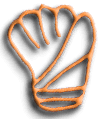
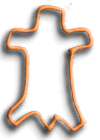
According to ancient history regarding these people, passed down to us as mythology, a mix of fact and fiction, the original Cretans or "Curetes" were Argonauts (Sailors of the Argo). They were the Minyae, the five immortal Curetes also called Dactyls, collectively Dactyloi, meaning fingers, who established the Minoan civilization. Exactly five "Dactyl/Glove" pictographs appear on the Phaistos Disk perhaps representing these five immortal Curetes or Cretans. Perhaps the rope truss tattoo symbolizes the sailor's lineage as descendant of the Argonauts and one of the five original Curetes/Dactyloi. Beside the "Glove" appears to be the "Golden Fleece" pictograph (above, 4), eternally sought for by the Argonauts sailing the night skies in the Argo. The fleece belonged to the golden haired ram (5), possibly the pictograph for Aries on the Phaistos Disk. Aries was anciently associated with the sun god Ra.
The second puzzle solution arrived at by the connect-the-dots solution method involves the star Sirius. Preserved on the Phaistos Disk, using pictographs and spirals etched in clay, is a treatise on how geometry, mathematics, and astronomy - the integrated sciences of the Minoan world and the sacred sciences of the first Hermeticists - were used to propose the first recorded heliocentric theory of the solar system/universe and the first recorded theory that the sun is a star.
Nicolas Copernicus (1473 - 1543 CE) is credited with the discovery that planets revolve around the sun. For maintaining the heretical Corpernican heliocentrism, Galileo (1564 - 1642 CE) was condemned, threatened with torture, and placed under house arrest by the Catholic Church in its failed attempt to suppress the ancient enlightened perspective that Earth is not the center of the universe.
But 1000 years before that, heliocentrism was regarded as a radical theory and apparently suppressed by astronomers through the ages who could see no value in supporting it, if they had ever heard of it. The Greek astronomer Aristarchus of Samos (c.310 - c.230 BCE) proposed such a theory, believed to be based upon a theory by Philolaus of Croton (c. 470 - 385 BCE), Greek Pythagorean, regarding a fire at the center of the universe which Aristarchus believed to be the sun.
In a temporary breakthrough in the continuous social suppression of this enlightened idea, Archimedes of Syracuse (c.287 - c.212 BCE) writes to King Gelon regarding Aristarchus' theory. Though King Gelon is made aware it, the theory of heliocentrism becomes occulted again for 1000 years:
"You are now aware that the "universe" is the name given by most astronomers to the sphere the centre of which is the centre of the earth, while its radius is equal to the straight line between the centre of the sun and the centre of the earth. This is the common account as you have heard from astronomers. But Aristarchus has brought out a book consisting of certain hypotheses, wherein it appears, as a consequence of the assumptions made, that the universe is many times greater than the "universe" just mentioned. His hypotheses are that the fixed stars and the sun remain unmoved, that the earth revolves about the sun on the circumference of a circle, the sun lying in the middle of the orbit, and that the sphere of the fixed stars, situated about the same centre as the sun, is so great that the circle in which he supposes the earth to revolve bears such a proportion to the distance of the fixed stars as the centre of the sphere bears to its surface." (Archimedes)
That description, on diagram, would look like this:
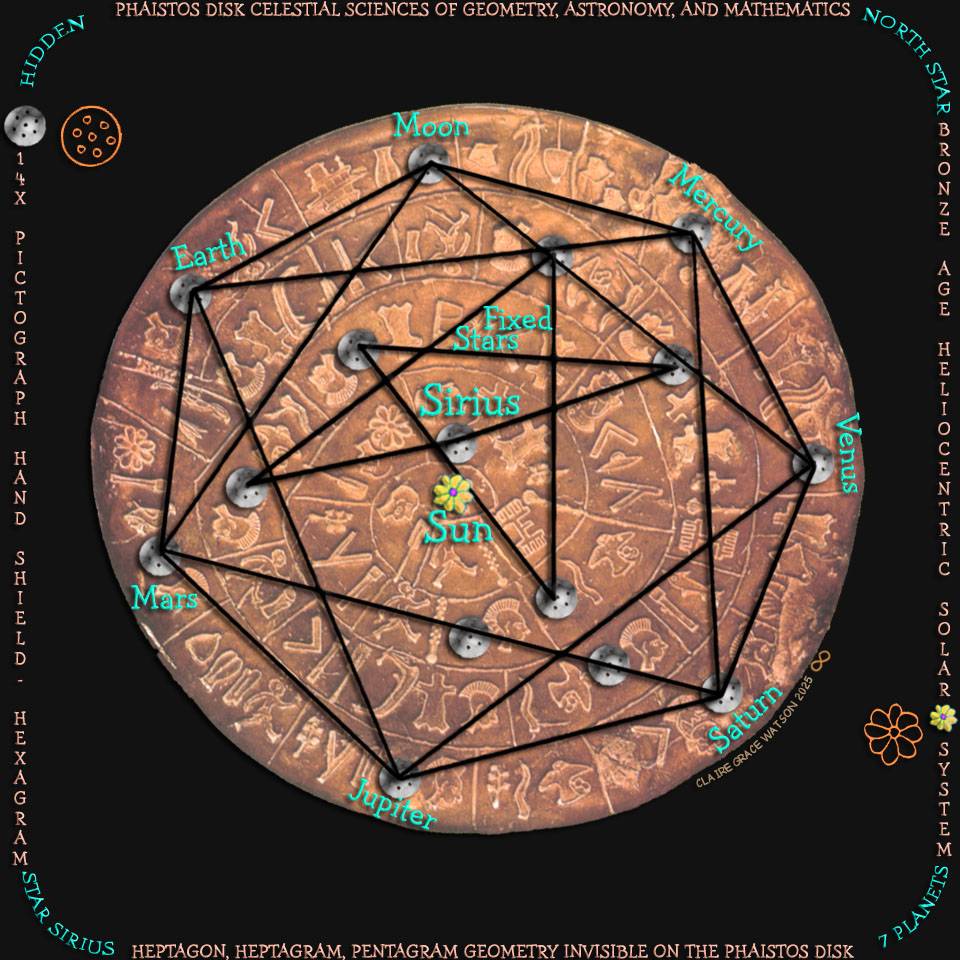
It appears that 1,300 years before Archimedes' letter to King Gelon, Minoan astronomers speculated that Earth is a planet and that the planets revolve around the sun "on the circumference of a circle," and remain in their orbit because they are connected to each other. Theorized on the Phaistos Disk is that the connection is not the force of gravity, of which they knew nothing, but is the force of geometry, of which they were masters.
The ancient science of geometry had built the Great Pyramid, the greatest of all structures, at least 1,600 years before the Phaistos Disk was created. It may not have been there forever but would remain there, if not forever, for long enough to be recognizable as pictographs on the Phaistos Disk whenever, if ever, the Disk was excavated.
Predictably, then, the third, fourth, and fifth puzzle solutions arrived at by the connect-the-dots solution method involves something worthy of the amount of space dedicated to it on the Phaistos Disk. Three pictographs of the massive Great Pyramid fitted onto the tiny, 6" diameter Phaistos Disk, that has already produced images of the Constellation Argo and the heliocentric solar system, establishes this pottery art masterpiece as history's most monumental achievement in art miniaturization.


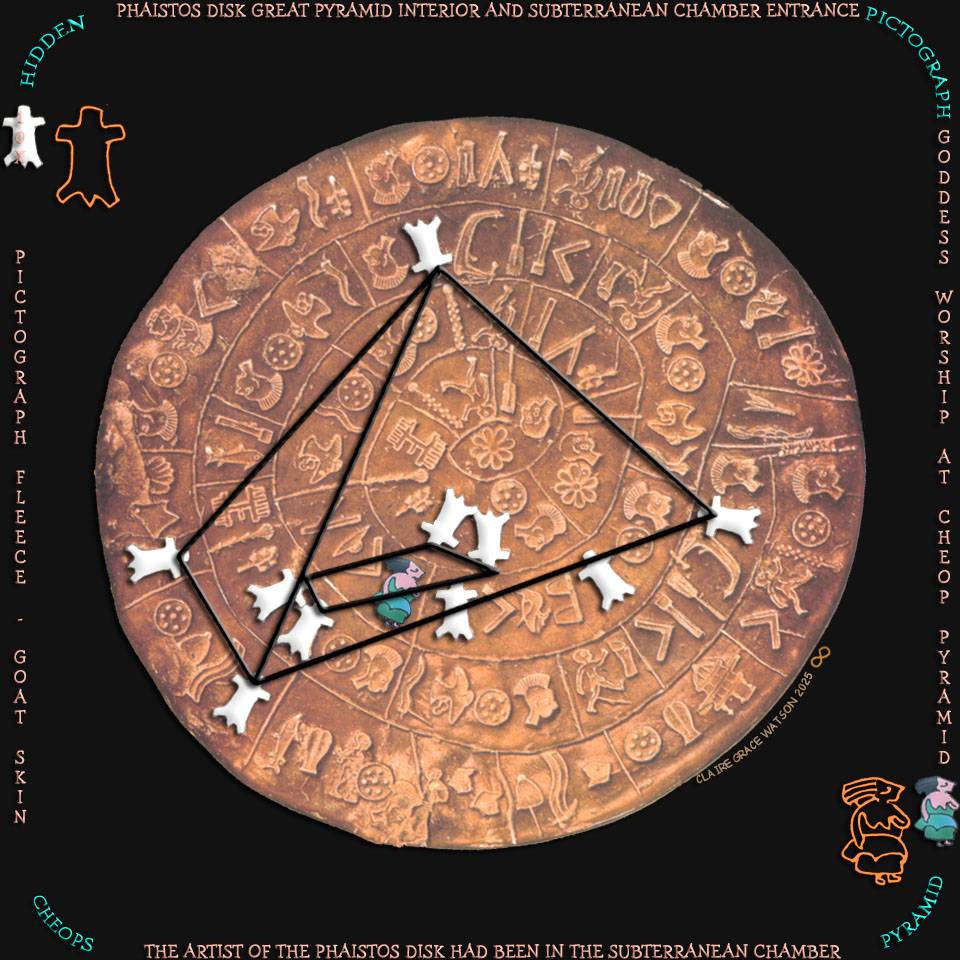
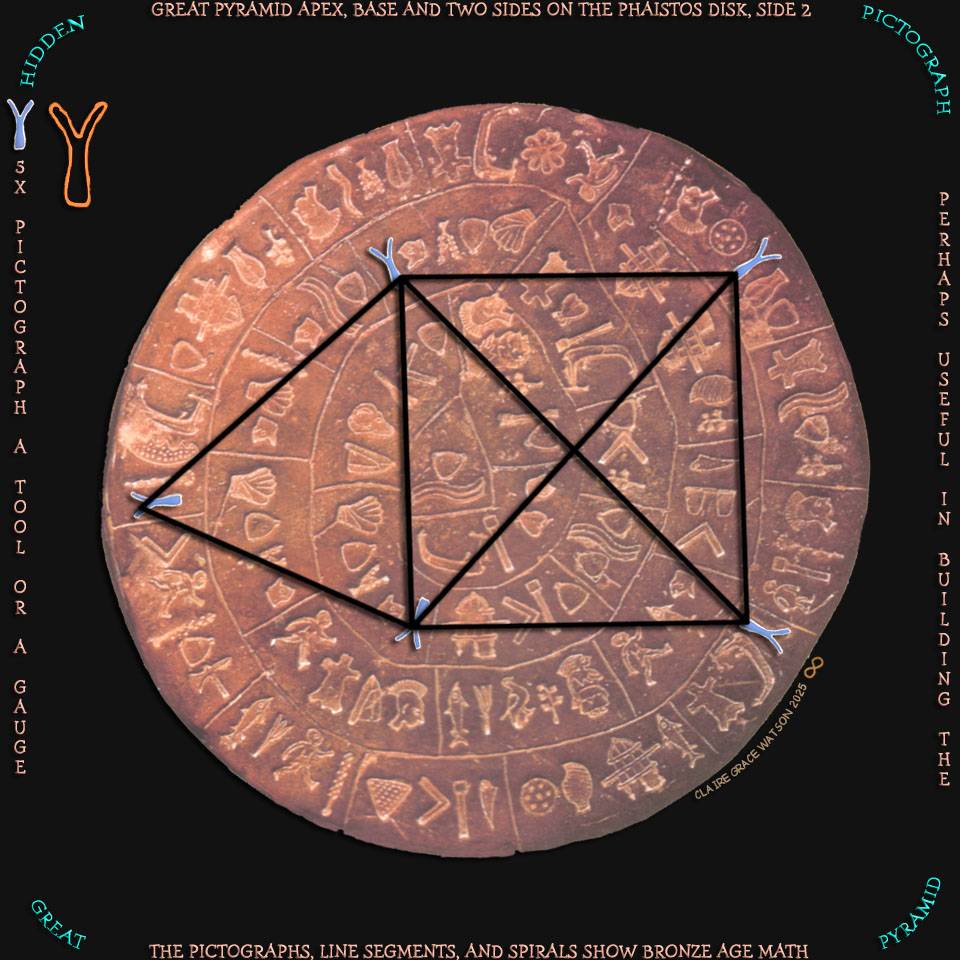
The sixth and seventh puzzle solutions arrived at by the connect-the-dots solution method provides us with the message from the Mediterranean Bronze Age that it was common knowledge, at least to the artist of the Phaistos Disk if not the entire population, how the Great Pyramid was built - not by aliens in UFO's but by human beings wielding the tools of geometry.

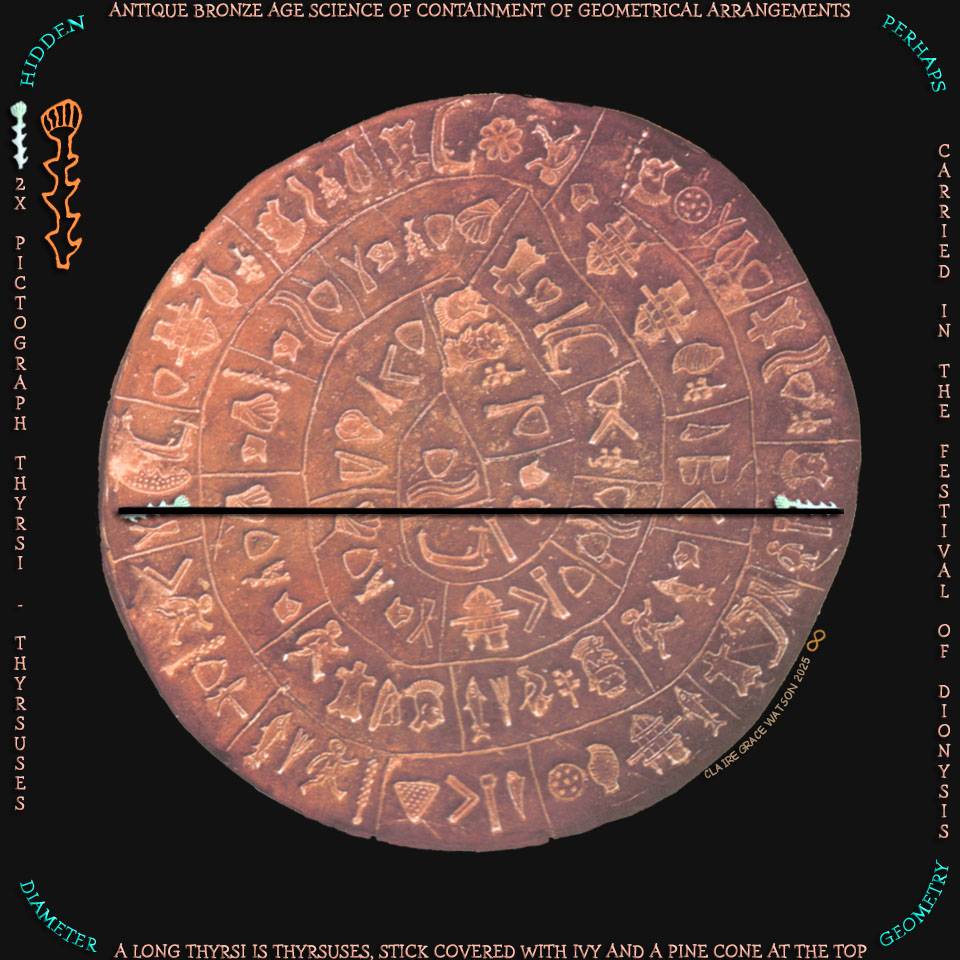
The eighth puzzle solution arrived at by the connect-the-dots solution method reveals historical information about the Minoan civilization that the artist considered so important that it was included on the Disk along with the Great Pyramid, the Constellation Argo, the Right Triangle, and Diameter. The common idea of Minoan culture is that they had no military but were dependant upon the military strength of Egypt. The final puzzle solution reveals a large pictograph that serves the dual purpose of arguing convincingly against that theory while it lays claim to mastery of advanced geometry with a pictograph demonstrating both nested geometry and an important component of the Minoan culture - the military.
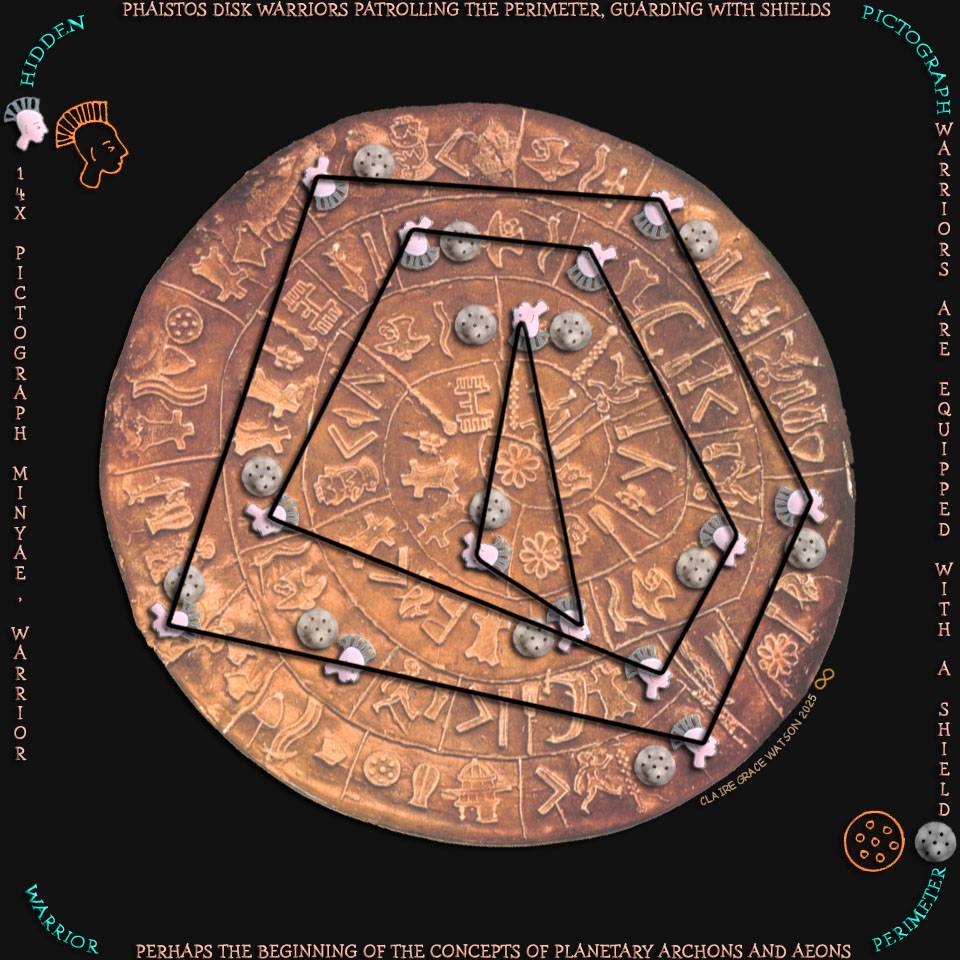
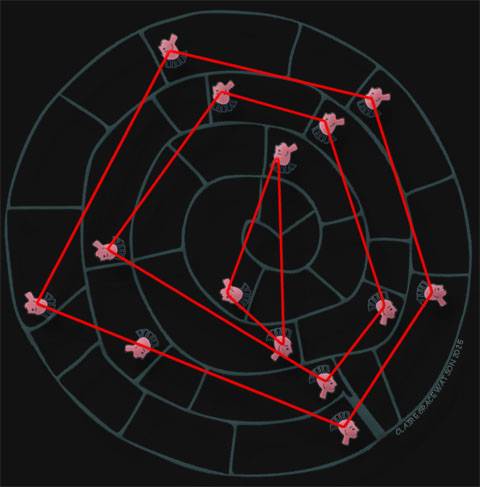
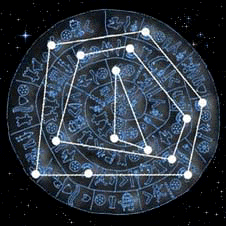
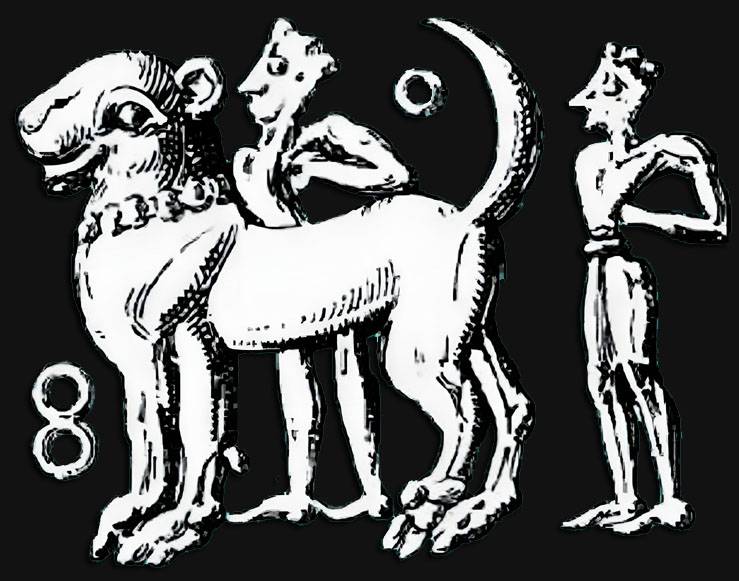 The Minoans may have included the symbols for the constellations in much of their art and not just on the Phaistos Disk. Is this just an impossibly huge dog on a Minoan bead-seal/cylinder seal or could it represent the "Great Dog constellation," Canis Major and the "dog star" Sirius?
The Minoans may have included the symbols for the constellations in much of their art and not just on the Phaistos Disk. Is this just an impossibly huge dog on a Minoan bead-seal/cylinder seal or could it represent the "Great Dog constellation," Canis Major and the "dog star" Sirius?
![]()
![]() The circle above the great dog could read "star" and the figure 8 symbol to the left, two stars combined, could read "star group" or constellation, in this case Great Dog, Canis Major, with the largest star in the sky, Sirius.
The figure 8 might therefore be a pictograph for constellation, logically so because the stars are infinite, and we might also see it as a way to understand how such a masterpiece as the Phaistos Disk was conceived.
The circle above the great dog could read "star" and the figure 8 symbol to the left, two stars combined, could read "star group" or constellation, in this case Great Dog, Canis Major, with the largest star in the sky, Sirius.
The figure 8 might therefore be a pictograph for constellation, logically so because the stars are infinite, and we might also see it as a way to understand how such a masterpiece as the Phaistos Disk was conceived.

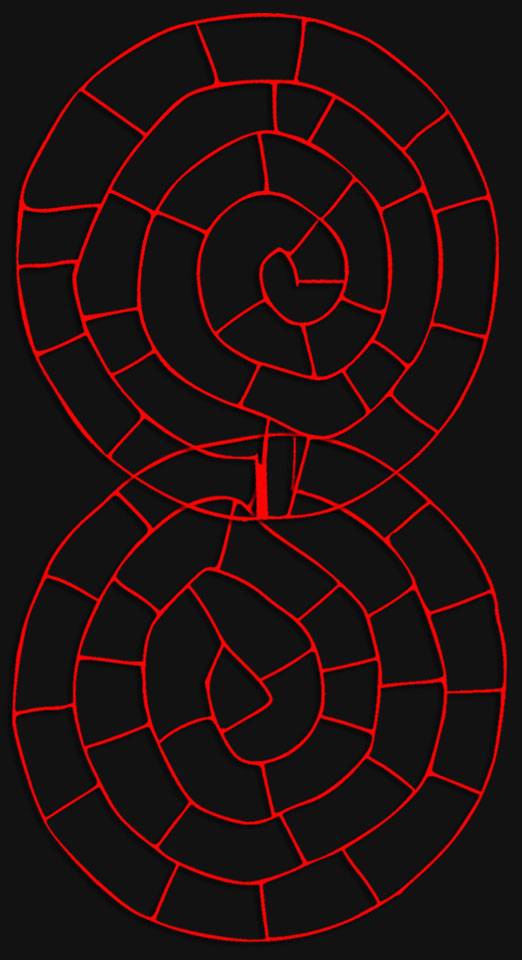 If it is a sign for constellation, this would make the maze puzzle solution even more a-mazing! The solution would be their symbol for constellation and a validation that many of the geometries seen on the Phaistos Disk are constellations - the geometry in the stars. It would mean the two sides of the Phaistos Disk, individually, represent "star," and connected together they represent "star group" or constellation. The Phaistos Disk might have been conceived of as a way to preserve all the constellations the Minoans had identified and a way of preserving their delineation and its huge significance to their culture in forming their world view.
If it is a sign for constellation, this would make the maze puzzle solution even more a-mazing! The solution would be their symbol for constellation and a validation that many of the geometries seen on the Phaistos Disk are constellations - the geometry in the stars. It would mean the two sides of the Phaistos Disk, individually, represent "star," and connected together they represent "star group" or constellation. The Phaistos Disk might have been conceived of as a way to preserve all the constellations the Minoans had identified and a way of preserving their delineation and its huge significance to their culture in forming their world view.

![]() The Bull's Foot appears twice on the disk, both times on side one and each time with a Walker. (left) The Bull's Foot appears upside-down in relation to the Walker, so perhaps the indication is the Bull's Foot is above or in the sky. This two-pictograph combination might also imply Serapis, the sacred Osiris-Apis bull worshipped in Egypt.
The Bull's Foot appears twice on the disk, both times on side one and each time with a Walker. (left) The Bull's Foot appears upside-down in relation to the Walker, so perhaps the indication is the Bull's Foot is above or in the sky. This two-pictograph combination might also imply Serapis, the sacred Osiris-Apis bull worshipped in Egypt.











Connect these matching Walker pictographs with lines to draw the Taurus constellation.

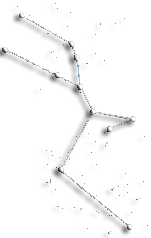
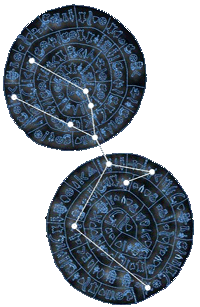 |
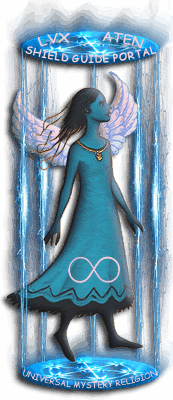 Copyright Notice - Disk of the World - Text and images copyrighted March 21, 1993-2025, Claire Grace Watson, B.A., M.S.T., U.S. Copyright and under the Digital Millennium Copyright Act of 1998, All rights reserved. No part of this web page may be reproduced or transmitted in any form or by any means without written permission from the author, except for the inclusion of brief quotations in a review.
Copyright Notice - Disk of the World - Text and images copyrighted March 21, 1993-2025, Claire Grace Watson, B.A., M.S.T., U.S. Copyright and under the Digital Millennium Copyright Act of 1998, All rights reserved. No part of this web page may be reproduced or transmitted in any form or by any means without written permission from the author, except for the inclusion of brief quotations in a review.